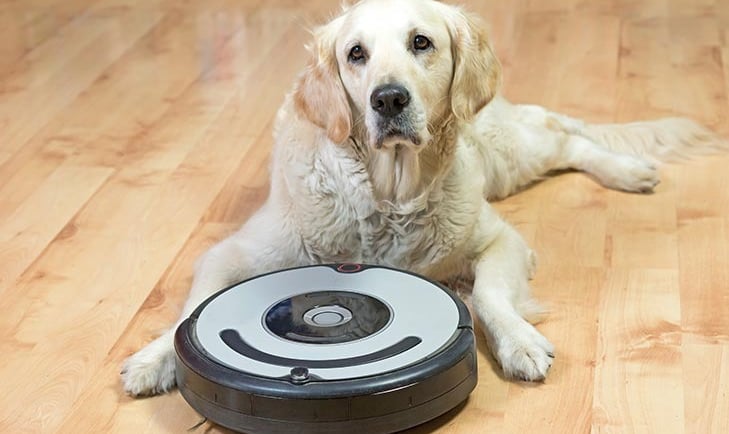items chosen one by one so you have the best option and save money on amazon (Links in articles)
Why Some Dogs Hate the Vacuum (And What You Can Do About It)
You grab the vacuum, and suddenly your dog is barking, hiding, or running for the door. Sound familiar? You're not alone—millions of pet owners struggle with dogs that panic or lash out when the vacuum comes out. But why do dogs react this way? And how can you help them stay calm? In this article, we'll explore the science behind vacuum fear and give you practical, vet-approved strategies to make cleaning less stressful for everyone.
6/26/20252 min leer


🧠 Why Dogs Fear the Vacuum: 3 Core Reasons
1. The Loud, Unpredictable Noise
Dogs have much more sensitive hearing than humans. What sounds like a normal hum to you may feel like a jet engine to them.
🧏 Vacuum noise ranges from 70–90 decibels—enough to cause stress in animals with acute hearing.
👉 Explore top-rated pet-friendly tools and calming aids on Amazon
2. Strange Movements and Size
Vacuums are large, move erratically, and often “chase” the dog around the house. To a dog, this looks and feels like a threat.
Many dogs interpret the vacuum as a predator or unknown invader, triggering their fight-or-flight response.
3. Past Negative Associations
If your dog has been startled by the vacuum before—especially during their early socialization period—they may now associate it with fear, noise, or punishment.
🧠 Dogs have long memories. One bad experience can lead to lasting anxiety.
🧴 What You Can Do About It
✅ 1. Start With Desensitization Training
Desensitization means gradually exposing your dog to the vacuum in a safe, calm, and non-threatening way.
Steps:
Leave the vacuum out, unplugged, so they get used to the sight.
Reward calm behavior near it with treats or praise.
Eventually turn it on in another room for short periods while offering a treat.
Repeat daily to build tolerance.
🧸 2. Use Distraction Toys During Cleaning
Keeping your dog busy while you vacuum can help break the fear cycle.
🧠 Try puzzle toys, lick mats with peanut butter, or treat-dispensing balls.
👉 Explore top-rated pet-friendly tools and calming aids on Amazon
This builds a positive association with vacuum time.
💨 3. Try Calming Sprays or Diffusers
Natural pheromone sprays or calming diffusers can help reduce anxiety by mimicking the scent of a safe environment.
🌿 Recommended: Adaptil Dog Calming Diffuser or Spray
👉 Explore top-rated pet-friendly tools and calming aids on Amazon
You can also spray your dog’s bed or safe zone before vacuuming.
🔇 4. Upgrade to a Quieter Vacuum
Modern vacuums now offer low-noise options designed for pet homes. These create less stress for your dog and work just as effectively.
🤫 Best Pick: BISSELL ICONpet Turbo or Shark Anti-Allergen QuietTech
👉 Explore top-rated pet-friendly tools and calming aids on Amazon
Some even include pet-specific attachments to clean fur from upholstery with minimal noise.
🏠 5. Create a Safe “Vacuum-Free Zone”
Before cleaning, guide your dog to a designated room or crate with:
A favorite blanket or bed
Toys and chew treats
White noise or calming music
This gives them a retreat space where they feel in control.
🚨 When to Seek Help
If your dog shows signs of extreme fear or aggression, such as:
Uncontrollable shaking
Barking and growling
Attempting to bite the vacuum
Hiding for hours
…it may be time to consult a certified dog behaviorist or your vet for help with behavioral therapy.
✅ Final Thoughts: You Can Help Your Dog Stay Calm
Vacuum anxiety is real, but with the right approach, it’s manageable.
Try This Combo:
Desensitization training
Puzzle toys during cleaning
Pheromone diffusers or sprays
A quieter vacuum model
Safe space with white noise
👉 Explore top-rated pet-friendly tools and calming aids on Amazon
Your dog deserves a peaceful environment—and so do you.